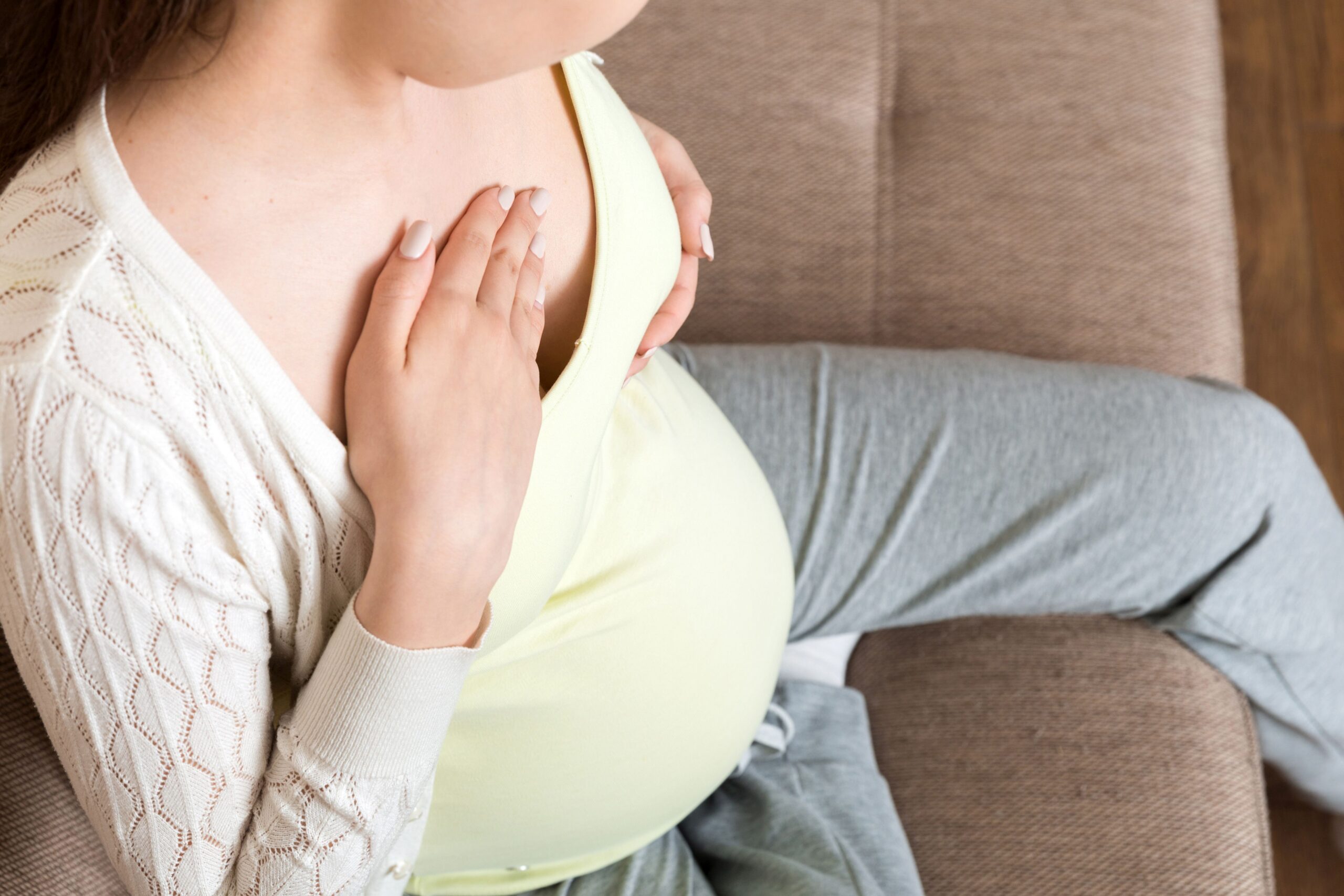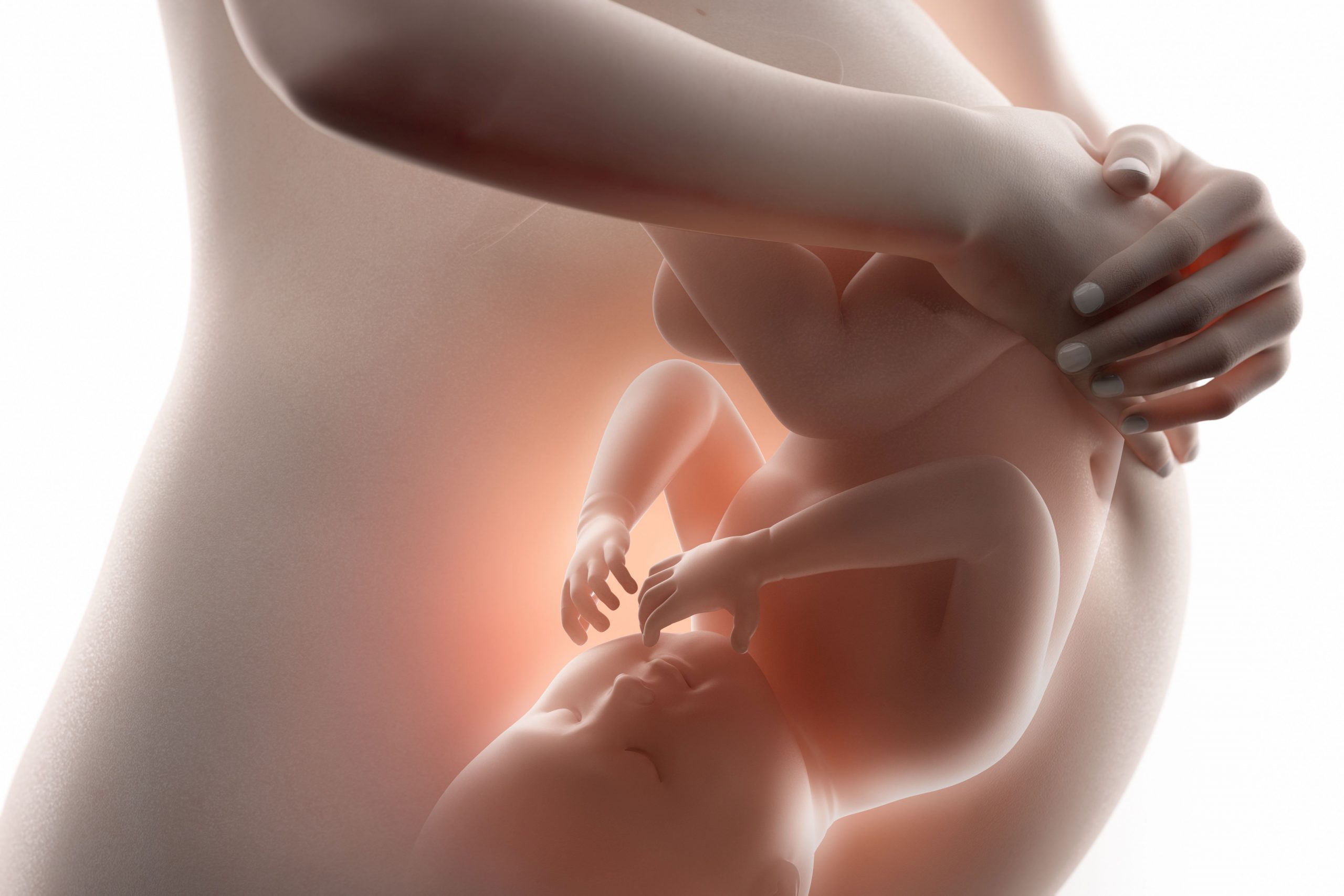Pregnancy is one of the most exciting, but also demanding periods in a woman’s life, during which it is worth taking care of both emotional and physical health. A basic element of a healthy lifestyle, including during pregnancy, is of course physical activity. Unfortunately, many pregnant women are quite reluctant to do any physical exercise, relying rather on passive rest. Meanwhile, such exercises do not have to involve intense exertion at all. In addition to traditional exercises, we also have a variety of relaxation techniques in pregnancy that allow the body to calm down and relax tense muscles. One such technique is Jacobson’s progressive muscle relaxation. What is this method? Let’s check it out!

Table of Contents:
What is progressive muscle relaxation?
Why use progressive muscle relaxation during pregnancy?
What does the process of progressive muscle relaxation look like?
Practical exercises of progressive muscle relaxation for pregnant women
Can progressive muscle relaxation help in childbirth?
Summary
What is progressive muscle relaxation?
Jacobson’s Progressive Muscle Relaxation(PRM or PMR for progressive muscle relaxation) is a relaxation technique developed by American psychiatrist Edmund Jacobson in the 1920s. The method saw the light of day in 1908 at Harvard University, where Jacobson first presented it.
The technique involves tensing and relaxing selected muscle groups. Jacobson was convinced that there was a close relationship between muscle tension and the functioning of the nervous system. He believed that the more relaxed the muscles, the more relaxed and relaxed the mind. And although the method of progressive muscle relaxation developed by Jacobson is not a young one, it still has its supporters and is recommended by both psychologists and physiotherapists as an effective method of dealing with fatigue, anxiety or permanent stress.
Why use progressive muscle relaxation during pregnancy?
During pregnancy, a woman’s body changes dramatically, and the endocrine system undergoes a real revolution. With the growing belly, the body has to endure more and more stress. Many moms-to-be therefore suffer from back pain and general fatigue. However, their problems do not end there.
Mental health during pregnancy is a topic quite rarely discussed in the public forum. Meanwhile, it is worth remembering that the uncertainty associated with childbirth and motherhood awaiting a woman can be a source of anxiety and permanent stress. Progressive muscle relaxation is a method that allows, in a sense, to manage stress during pregnancy and to deal with the negative effects that come with the blessed state. Little! Since the method effectively eliminates stress, it is also recommended for women struggling with the problem of infertility and embarking on the IVF procedure, which, as you know, can be stressful for a woman and cause emotional strain.
Benefits of relaxation for pregnant women:
- reducing stress and anxiety: progressive relaxation helps relieve the symptoms of stress, anxiety and fear that can occur during pregnancy.
- Improving sleep quality: very many pregnant women find it difficult to find a comfortable sleeping position. Relaxing the muscles before bed can help improve sleep quality and reduce the frequency of nighttime awakenings.
- greater awareness of one’s own body: progressive relaxation teaches mothers-to-be to consciously relax specific muscle groups, which contributes to greater awareness of one’s own body.
- closeness to the baby: regular use of relaxation techniques can help create a bond with the baby still in the womb, and allows a fuller and more conscious experience of pregnancy.
What is the process of progressive muscle relaxation?
Progressive muscle relaxation is a process consisting essentially of two stages:
STAGE I, or progressive relaxation – involves learning to consciously tense single muscle groups and incorporating more.
STAGE II, or differentiated relax ation – involves tensing a single muscle group and relaxing other groups at the same time.
Practical exercises of progressive muscle relaxation for pregnant women
In practice, training in progressive muscle relaxation using Jacobsen’s method involves tensing (on the inhale) and relaxing (on the exhale) specific muscle groups. For example, such a workout might look like the following:
- Take an inhalation and tense your right foot, hold for 5 seconds, and then relax as you exhale.
- Do an inhale and tighten the left foot, hold for 5 seconds, and then with the exhale relax.
- Do an inhale and tighten the right calf, hold for 5 seconds, then with the exhale relax.
- Do an inhale and tighten the left calf, hold for 5 seconds, then with the exhale relax.
- Do an inhale and tighten the right shoulder, hold for 5 seconds, then with the exhale relax.
- Do an inhale and tighten the left arm, hold for 5 seconds, then with the exhale relax.
- Do an inhale and tighten the right hand, hold for 5 seconds, then with the exhale relax.
- Make an inhalation and tighten the left hand, hold for 5 seconds, then with the exhalation relax.
- Do an inhale and tighten your buttocks, hold for 5 seconds, then with your exhale relax.
- Make an inhalation and tighten the abdomen, hold for 5 seconds, and then with the exhalation relax.
It is extremely important to find a quiet and peaceful place to exercise, where nothing will distract you. The workout can be done in any position – lying down, semi-sitting and sitting. It also does not matter which muscle part we start writing first. We can start both from the top, tensing the neck, for example, and gradually go down, as well as from the bottom, tensing the feet first, then the calves, thighs and so on.
Can progressive muscle relaxation help in childbirth?
By all means! Mastering progressive muscle relaxation can be extremely helpful during childbirth, as it teaches you to actively write specific muscle areas while relaxing muscles that don’t need to be involved at the time. In order for a woman to prepare well for childbirth and achieve the desired effect, she should begin her training as early as the second trimester of pregnancy. Initially, it should focus on acquiring the ability to relax the entire body, and only immediately before delivery on learning to selectively work the pelvic and abdominal muscles.
In conclusion, Jacobson’s progressive muscle relaxation is an excellent tool for moms-to-be to fully enjoy pregnancy and achieve a state of deep relaxation. Relaxation exercises for pregnant women have physical benefits as well as improving mental well-being. So if you’re pregnant, consider incorporating this technique into your daily routine and enjoy the peace of mind during this special time of your life.
Sources:
- D. Torbe, A. Torbe, D. Ćwiek: Physical activity of physiologically pregnant women, New Medicine 2013, no. 4. pp. 174-179.
- https://fizjoterapeuty.pl/fizjoterapia/trening-jacobsona.html









